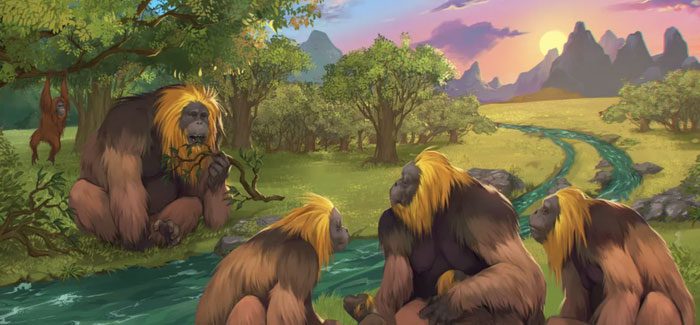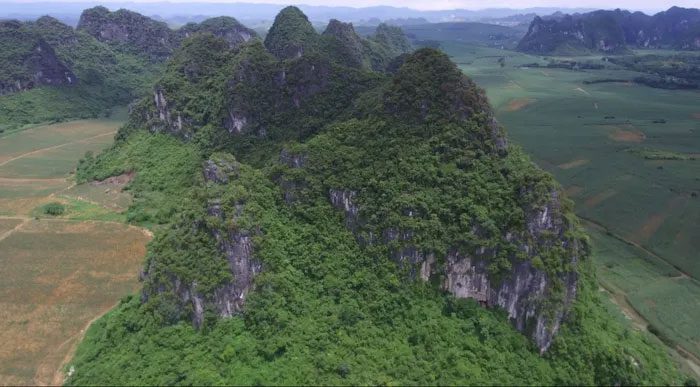Standing over 3 meters (nearly 10 feet) tall, Gigantopithecus blacki is the largest primate known to have ever existed on Earth (at least based on current knowledge). This creature roamed across China during its time.
Gigantopithecus blacki thrived throughout China until it went extinct approximately 295,000 to 215,000 years ago under mysterious circumstances.
In a recent study, scientists investigated the reasons behind the extinction of this gigantic ape, concluding that it struggled to adapt to rapidly changing environmental conditions.
The first evidence of Gigantopithecus emerged in 1935 when anthropologist Ralph von Koenigswald stumbled upon an unusual specimen in a traditional Chinese medicine shop in Hong Kong. Labeled as “dragon teeth”, von Koenigswald discovered that these molars belonged to an unidentified extinct ape species, which he named Gigantopithecus.
Even today, only 2,000 fossilized teeth and 4 jawbones serve as the sole evidence of their existence, meaning we have very little understanding of their actual appearance.

Gigantopithecus blacki is sometimes referred to as the “real-life King Kong” due to its enormous size, although it is more closely related to orangutans of the Ponginae family.
“The book on forests essentially turned them into a large orangutan. We don’t know how much G. blacki resembled orangutans, but it was definitely a Pongine,” stated Associate Professor Kira Westaway, a researcher at Macquarie University, whose recent study investigates the extinction of G. blacki.
To learn more about the disappearance of this species, Westaway and a large group of researchers explored 22 caves in Guangxi province, China, to gather pollen samples, fossils, and sediments.
Their discoveries indicated that the environment consisted of dense, lush forests about 2.3 million years ago, ideal for G. blacki and other primate inhabitants, including the orangutan (Pongo weidenreichi).

This drone image shows some caves in Guangxi Province, China, where the remains of G. blacki were found.
However, around 600,000 years ago, the environment became more variable due to increased seasonal intensity, leading to changes in the types of vegetation growing in the forests. While this change suited the orangutans, it posed a challenge for G. blacki.
“Environmental changes that began around 600,000 years ago really highlighted the adaptability of G. blacki compared to P. weidenreichi (the orangutan). The dry climate at that time made it difficult for them to find fruit. G. blacki relied on less nutritious fallback foods like tree bark and twigs, while P. weidenreichi was more flexible in its fallback food sources, eating buds, leaves, flowers, nuts, seeds, and even insects and small mammals,” Westaway explained to IFLScience.
Ultimately, the massive size of G. blacki contributed to its downfall. In times of environmental change, one must be agile and adaptable, which is not easy when you stand 3 meters tall and weigh up to 300 kg (661 pounds).
“The foraging range of G. blacki was limited by its size, whereas P. weidenreichi moved nimbly under the canopy with a greater distance allowing for a wider foraging range. G. blacki remained in the forest while P. weidenreichi could move into more open forest environments. Interestingly, G. blacki even increased in size during this period, while P. weidenreichi decreased in size and became a more agile species,” she added.


















































